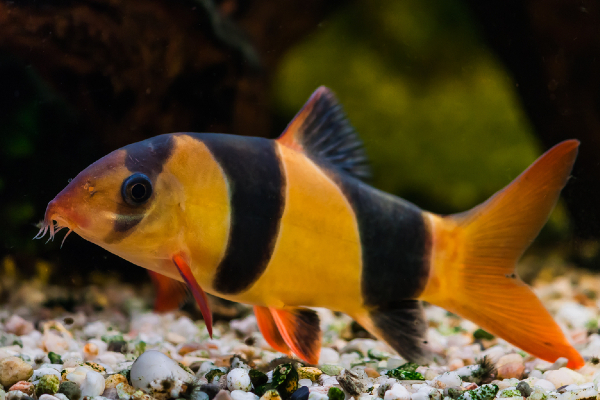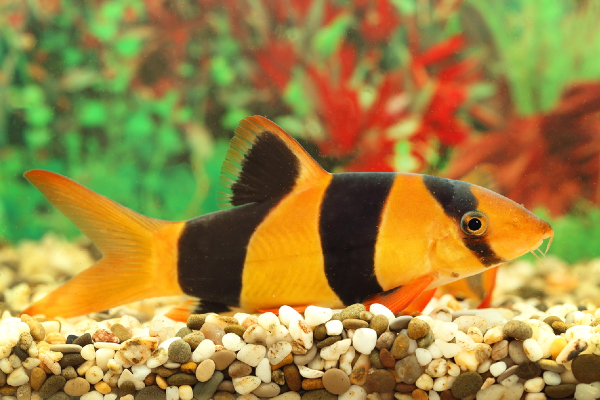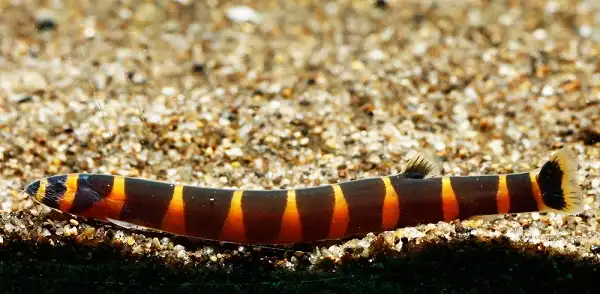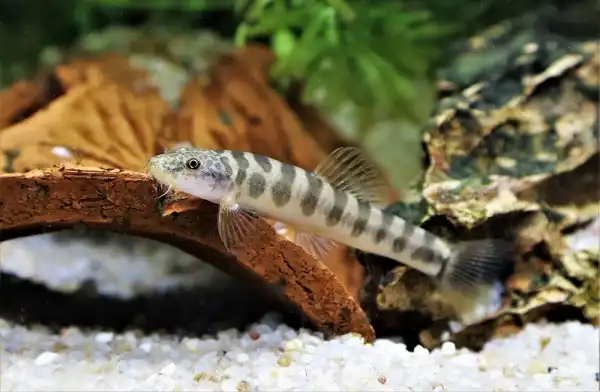When most people think of fish, the first thing that comes to mind is probably a brightly colored tropical fish swimming in an aquarium. But there are many different types of fish, including some that are perfect for keeping in a backyard pond. One such type of fish is the loach, which can be found in both temperate and tropical climates. Loaches come in a variety of shapes and sizes, and they make interesting and entertaining pets. If you’re thinking about adding a loach to your garden pond, read on for more information about these fascinating creatures.

Loach Description
Loaches are elongated fish with cylindrical bodies and small scales. Their heads are flattened and slightly broader than the rest of their bodies, and they typically have long, tapering barbels near their mouths. Loaches thrive in a wide range of habitats and prefer freshwater environments, such as lakes, rivers, streams, and wetlands. They are often brightly-colored and display a variety of striking patterns on their bodies. Because of their hardy nature and adaptability, loaches make excellent additions to any aquarium or fish tank. Whether you want to keep them as pets or use them for scientific research purposes, they are sure to be fascinating companions. So if you’re looking for an interesting fish to add to your collection, consider loach!
Loach Habitat
Loach habitats are found across a wide range of aquatic environments, from lakes and rivers to ponds and streams. Loaches are well suited to many different conditions, able to survive both in fast-flowing and still waters. What sets loach habitats apart from those of other types of fish is the diverse range of microhabitats that loaches can inhabit. Loaches will often burrow into soft sediments on the bottom of a waterbody, using their elongated bodies to move through complex underground networks. Loaches are also highly adept at finding cracks in rocks or crevices in submerged logs, where they can spend much of their time hiding from predators or laying low during periods of poor environmental conditions. Overall, loach habitats reflect the adaptability and versatility that has helped this fish family thrive for centuries.
Loach Diet
Loaches are a type of freshwater fish that are native to Asia. Loaches are known to be shy and reclusive, and they often hide among plants and rocks. Loaches are omnivorous and their diet consists of small invertebrates, algae, and detritus. In the wild, loaches typically feed on worms, insects, and other small aquatic creatures. Loaches will also consume any plant matter that they come across. In captivity, loaches can be fed a variety of foods, including pellets, flakes, freeze-dried foods, and live foods. It is important to provide a variety of food items in order to ensure a balanced diet. Loaches typically eat 2-3 times per day.
Loach Size
Loaches are typically bottom-dwellers and have long, eel-like bodies. Loaches come in a variety of sizes, with the largest species reaching up to two feet in length. The smallest species, on the other hand, only grow to be a few inches long. While they can be kept in tanks of various sizes, it is important to remember that loaches will grow to match the size of their environment. As a result, it is important to choose a tank that is large enough to accommodate full-grown loaches. By doing so, you can ensure that your fish will have plenty of room to swim and thrive.

Loach Lifespan
Loaches are a species of freshwater fish known for their long lifespan and their distinctive feathery appearance. Loach lifespans vary greatly depending on the individual fish, with some living as long as ten years, while others may only survive a few months. Factors that influence the lifespan of loaches include factors such as diet and habitat, but one of the most important determinants of longevity is maintenance. Loaches require careful feeding in order to stay healthy, and they also need regular water changes in order to keep their environment free from contaminants that can compromise their wellbeing. Overall, loaches are fascinating creatures that have much to offer scientists and hobbyists alike, thanks to their unique physiology and behavior patterns. So if you’re thinking about adding loach fish to your community tank, be sure to give them the care they need in order to help them live a long and happy life!
Loach Behavior
Loaches are known for their unique and complex behaviors. These fish tend to be quite intelligent and social, making them a fascinating subject of study. Loach behavior is characterized by intricate group dynamics and various display behaviors. For example, many loaches will distinguish between different members of their group, with some developing close social bonds over time. Loaches will often signal their intentions to each other through postures and movements in order to facilitate coordination. In addition, loaches are known for engaging in aggressive displays when encountering unfamiliar individuals or potential predators in their territory. Overall, loach behavior is an intriguing and complex aspect of these fascinating animals that continues to be extensively studied by scientists today.

Loach Speed
Loaches are known for their fast swimming abilities, making them a popular choice for freshwater aquariums. Loach speed is partly determined by their sleek, streamlined bodies, which allow them to swim through the water with ease. Additionally, loaches have large fins that help propel them forward quickly and effortlessly. Perhaps most importantly, however, loach speed is also dependent on their natural habitat and swimming behaviors. Loaches of the same species will typically travel at the same speed, and those inhabiting fast-moving or turbulent water tend to be faster than those in slow-moving streams and rivers. Overall, it is clear that loach speed is a complex combination of factors related to both physiology and environment, making it an important consideration for aquarists looking to create the perfect tank environment.
Loach Hunting
Loach hunting is a popular pastime in many parts of the world. While they are not considered to be valuable as food, they are prized by many as a challenging target for hunting. Loach hunting typically involves using a net to scoop the creatures out of the water. However, some hunters also use spears or fishing line to snag their prey. Loach hunting can be a rewarding experience for those who enjoy outdoor pursuits. Not only does it provide an opportunity to connect with nature, but it also offers the chance to test one’s skills at tracking and capture. For those who are looking for a new adventure, loach hunting may be the perfect activity.

Conclusion
Loach is a great choice for those who are looking for an easy to care for fish that can be kept in both cold and warm water. They are a schooling fish, so it’s best to keep at least six of them together. If you are looking for something different to add to your tank, loaches make an excellent choice and can be found in many pet stores.
Frequently Asked Question

